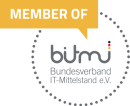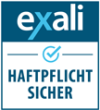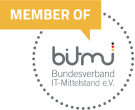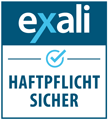Legacy Modernization:
Creating facts, figures and data with business intelligence solutions
"We received intensive and competent advice from the very first meeting. The advantages of a comprehensive software modernization and the strategic approach convinced us immediately. We are delighted to have found an experienced modernization partner in Insivio, as well as a professional team that really took the time to understand our requirements."

Introduction:
A leading market research company was faced with the challenge of improving its outdated, self-developed Business Intelligence (BI) tool. After decades of use, the tool developed in Java/Scala had reached its limits. In order to be equipped for the future and to be able to offer a broader range of valid, meaningful data, reports and benchmarks, the company decided to modernize the tool. Neither the expertise for legacy modernization nor the necessary documentation and IT resources were available. The customer asked itself: Where and how should we start?
challenge of the company:
The customer’s BI tool had significant limitations after a long period of use. The lack of documentation and the lack of expertise in the area of software modernization made it difficult to bring the tool up to date. In addition, the customer’s internal IT department was not sufficiently staffed to carry out this extensive modernization work independently. The costs for implementing the project also had to remain manageable and within budget.
Project goals:
- Future-proofing: development of a stable and user-friendly BI tool.
- Data availability: Enabling the creation of an unlimited amount of well-founded, meaningful data, reports and benchmarks.
- Cost control: Development and implementation should remain within a manageable cost framework.
- Documentation: Creation of meaningful and complete documentation.
- Solution approach for implementation: Create the basis for successful implementation of software modernization.
Implemented solution & realization:
Originally, the customer only wanted to hire a Java/Scala developer to support the internal IT team and make improvements to the existing tool. However, after further consultations, a comprehensive modernization of the BI tool was recommended in order to fully achieve the project goals.
Implementation steps:
1. tool analysis with the help of a business analyst:
- A business analyst was appointed to fully understand the functions and impact of the customer tool.
- Carrying out an analysis of the current status of the software and creating complete documentation of all modules and dependencies.
2. definition of the system architecture with the help of a system architect:
- A system architect was brought in to visualize the future tool landscape.
- Recommendation of the optimal tech stack (.NET and React) after weighing up all the pros & cons.
- Definition of the number and functions of the required IT resources.
3. project implementation with the help of an IT coordinator:
- Use of agile methods and introduction and use of a project management board.
- Close cooperation and continuous exchange between customer, IT specialists and IT coordinator.
4. personal meetings:
- On-site visits to the customer to discuss what has been achieved so far and details of the next steps.
- Strengthening partnership-based cooperation through personal exchange.
A business analyst and later a system architect were initially deployed to implement the project. The customer also benefited from the experience of the IT coordinator, who was provided as a service by Insivio at no additional cost.
Through the use of agile methods, a project management board, mature best practice and close communication between the customer, IT specialists and IT coordinator, all project participants and team members always had a complete overview of the project status, progress and results. The personal exchange on site further strengthened the already good relationship of trust with the customer.
Result:
- Comprehensive documentation: The business analyst successfully documented the current status to the customer’s complete satisfaction.
- Precise recommendations: The system architect formulated precise information and recommendations, which were visualized using flowcharts, tables and calculations.
- Sound basis for decision-making: The customer can now use this information to make well-founded decisions on how to proceed and implement the software modernization.
Conclusion and outlook:
The decision to modernize the legacy proved to be without a doubt the right approach for this complex project, which was also confirmed several times by the customer. He was impressed by the expertise of the IT professionals, especially given the initial uncertainty about how to approach software modernization. Both the business analyst and the system architect quickly got to grips with the BI tool and the workflows and developed a deep understanding. The system architect’s ideas and recommendations were particularly praised.
Thanks to this successful collaboration, Insivio was not only able to reach a decisive milestone in the customer’s project implementation, but also to strengthen their trust and establish itself as a competent partner for business intelligence solutions and software modernization.
No project is too big, no challenge too complex
– We deliver the solutions that help you move forward








